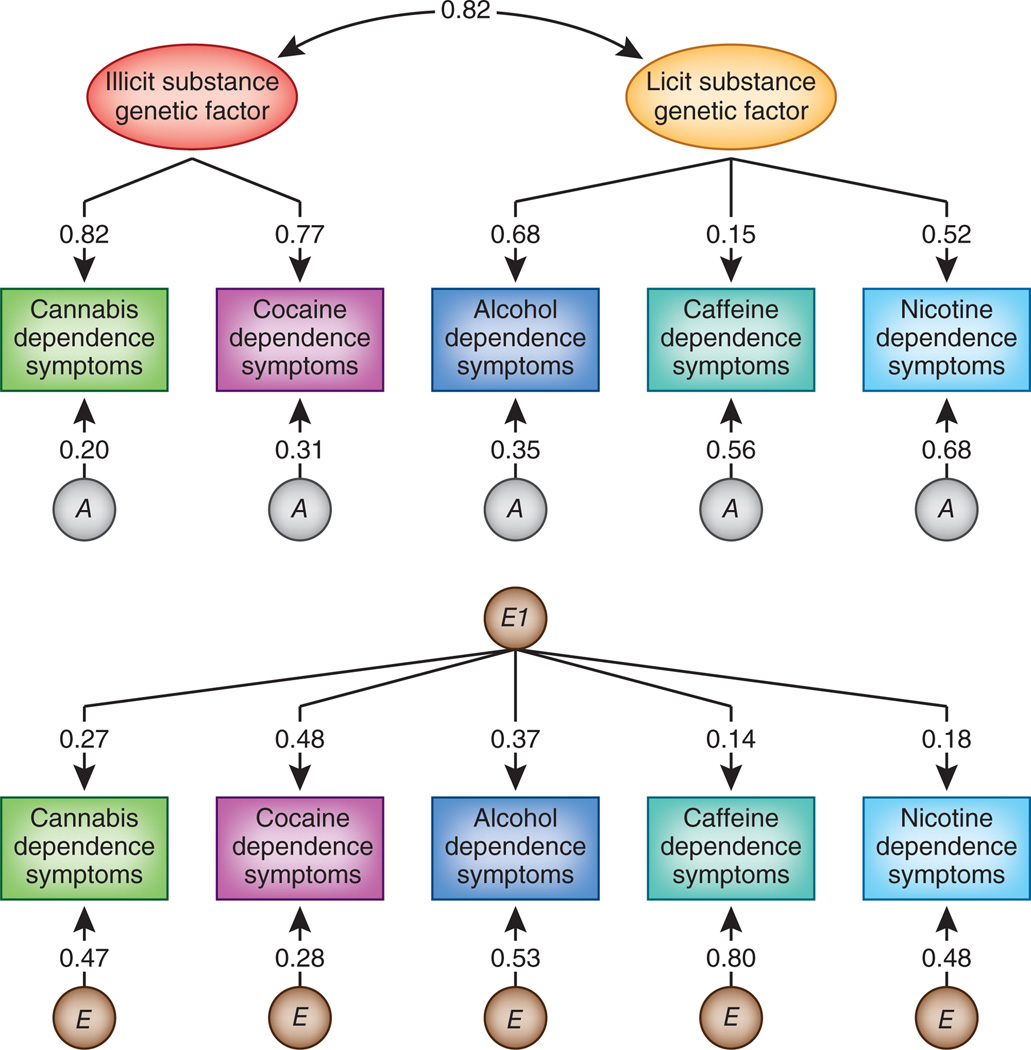Figure 1.
Parameter estimates for the best-fitting confirmatory model for symptoms of cannabis, cocaine, alcohol, caffeine and nicotine dependence. The double-headed arrow connecting the illicit and licit substance genetic factors represents the genetic correlation between these factors. A stands for additive genetic and E for environmental effects unique to each twin. E1 reflects the common factor for the unique environmental effects that affects risk for dependence across all of the psychoactive substances examined. The top part of the figure depicts genetic factors that influence drug dependence and the bottom part reflects environmental factors. The numbers on the paths represent standardized loadings and thus need to be squared to reflect the proportion of variance in the observed SUD accounted for by the factor.

